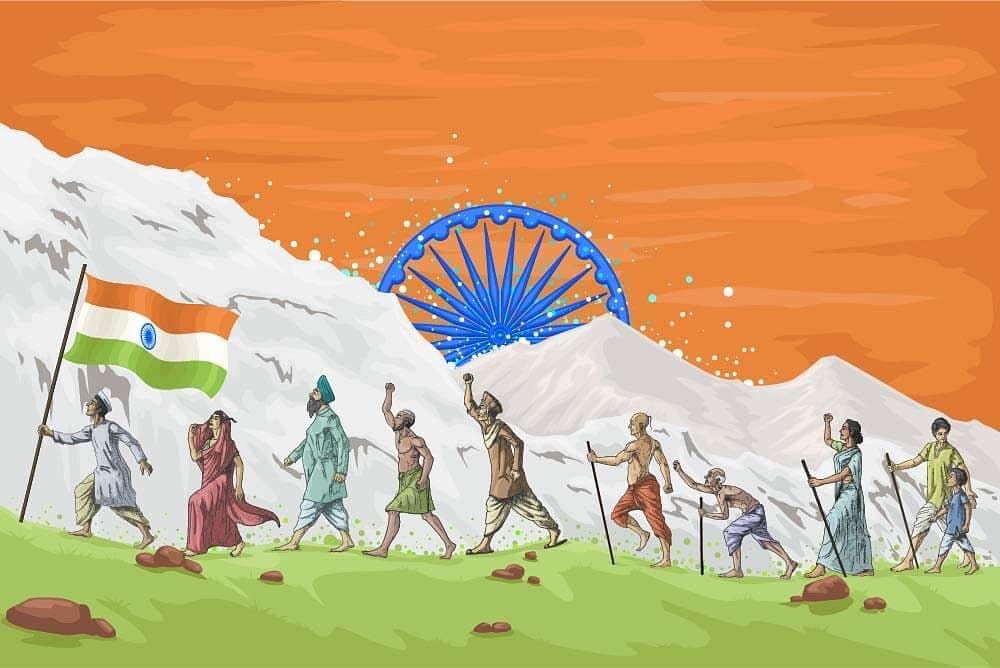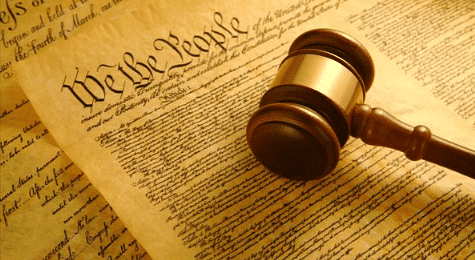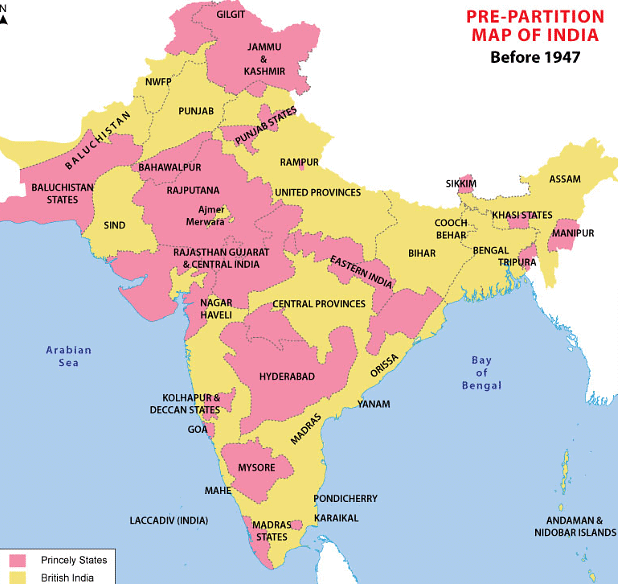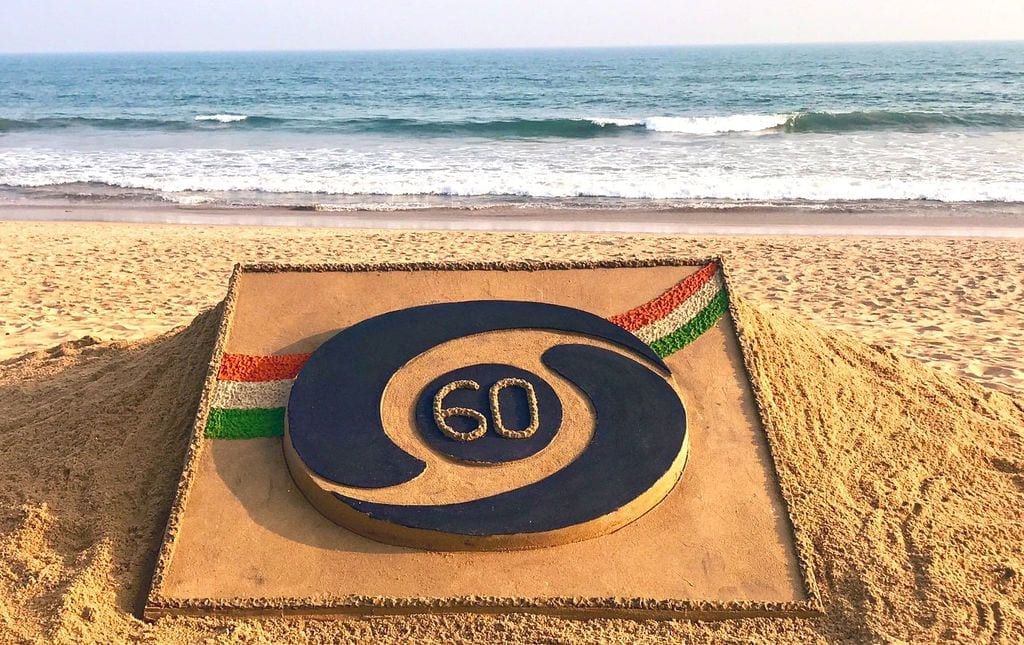Class 8 History Notes - India After Independence

After a long and difficult freedom struggle, India attained her Independence from British rule in 1947. However, this Independence came with the partition of the country. A new state of Pakistan was created with portions of Western and Eastern India. After Independence, a Constitution was framed, new states were formed, planning for the development of the country.
A New and Divided Nation
When India became independent in August 1947, it faced a series of very great challenges.
- As a result of Partition, 8 million refugees had come into the country from what was now Pakistan. These people had to be found homes and jobs.
- Then there was the problem of the princely states, almost 500 of them, each ruled by a maharaja or a nawab, each of whom had to be persuaded to join the new nation.
- The problems of the refugees and of the princely states had to be addressed immediately.
- In the longer term, the new nation had to adopt a political system that would best serve the hopes and expectations of its population.

- India’s population in 1947 was large, almost 345 million.
- It was also divided. There were divisions between high castes and low castes, between the majority
- Hindu community and Indians who practiced other faiths.
- The citizens of this vast land spoke many different languages, wore many different kinds of dress, ate different kinds of food, and practiced different professions
- At Independence, the vast majority of Indians lived in the villages. Farmers and peasants depended on the monsoon for their survival.
- Unity and development had to go hand in hand. If the divisions between different sections of India were not healed, they could result in violent and costly conflicts – high castes fighting with low castes, Hindus with Muslims, and so on.
- At the same time, if the fruits of economic development did not reach the broad masses of the population, it could create fresh divisions
- example, between the rich and the poor, between cities and the countryside, between regions of India that were prosperous and regions that lagged behind.
A constitution is Written
 Constitution of India
Constitution of India
- Between December 1946 and November 1949, some three hundred Indians had a series of meetings on the country’s political future. These “Constituent Assembly” meetings were held in New Delhi. These discussions resulted in the framing of the Indian Constitution, which came into effect on 26 January 1950.
- One feature of the Constitution was its adoption of a universal adult franchise. All Indians above the age of 21 would be allowed to vote in state and national elections. On the other hand, soon after Independence, India chose to grant this right to all its citizens regardless of gender, class or education. The second feature of the Constitution guaranteed equality before the law to all citizens, regardless of their caste or religious affiliation.
- India also had large populations of Sikhs, Christians, Parsis and Jains. Under the new Constitution, they would have the same rights as Hindus the same opportunities when it came to seeking jobs in government or the private sector, the same rights before the law.
- The third feature of the Constitution offered special privileges for the poorest and most disadvantaged Indians.
- The Constituent Assembly spent many days discussing the powers of the central government versus those of the state governments. The Constitution balanced these competing claims by providing three lists of subjects:
(i) Union List, with subjects such as taxes, defence and foreign affairs, which would be the exclusive responsibility of the Centre;
(ii) State List of subjects, such as education and health, which would be taken care of principally by the states;
(iii) Concurrent List, under which would come subjects such as forests and agriculture, in which the Centre and the states would have joint responsibility. - Another major debate concerned language. Many members believed that the English language should leave India and its place should be taken by Hindi. Finally, a compromise arrived that Hindi would be the “official language” of India, and English would be used in the courts, the services, and communications between one state and another.
- The Constitution of India was framed by Dr B.R. Ambedkar, Chairman of the Drafting Committee. In his final speech, Dr Ambedkar pointed out that political democracy had to be accompanied by economic and social democracy. With the new Constitution, he said,
 Dr. B.R Ambedkar
Dr. B.R Ambedkar
"India was going to enter into a life of contradictions. In politics we will have equality and in social and economic life we will have inequality. In politics, we will be recognising the principle of one man one vote and one value. In our social and economic life, we shall, by reason of our social and economic structure, continue to deny the principle of one man one value."
How were States to be Formed?
 Linguistic States
Linguistic States
- Back in the 1920s, the Indian National Congress promised that after independence, each major linguistic group would have its own province. India had been divided on the basis of religion. Prime Minister Nehru and Deputy Prime Minister Vallabhbhai Patel were against the creation of linguistic states.
- The Kannada speakers, Malayalam speakers, the Marathi speakers, demanded their own state. The strongest protests came from the Telugu-speaking districts of what was the Madras Presidency. Potti Sriramulu went on a hunger strike demanding the formation of Andhra state to protect the interests of Telugu speakers.
- On 15 December 1952, Potti Sriramulu died. On 1 October 1953, the new state of Andhra came into being, which subsequently became Andhra Pradesh. A States Reorganisation Commission was set up, which submitted its report in 1956, recommending the redrawing of the district and provincial boundaries to form compact provinces of Assamese, Bengali, Oriya, Tamil, Malayalam, Kannada and Telugu speakers respectively. The large Hindi-speaking region was broken up into several states. In 1960, Bombay was divided into separate states for Marathi and Gujarati speakers. In 1966, the state of Punjab was divided into Punjab and Haryana.
Planning for Development
 Economic Development
Economic Development
- In 1950, the government set up a Planning Commission to design and execute suitable policies for economic development. The mixed economy model means the State and the private sector would play important and complementary roles in increasing production and generating jobs. The Planning Commission work is to define which industries should be initiated by the state and which by the market, and how to achieve a balance between the different regions and states.
 Construction of Dams
Construction of Dams
- In 1956, the Second Five-Year Plan was formulated, which focused strongly on the development of heavy industries such as steel, and on the building of large dams. These sectors would be under the control of the State. Some people criticized this approach stating that it had put inadequate emphasis on agriculture. Others argued that it had neglected primary education.
The Nation, Sixty Years On
 India celebrated Sixty Years of Independence
India celebrated Sixty Years of Independence- On 15 August 2007, India celebrated sixty years of its existence as a free nation. India is still united, and democratic. Many foreign observers thought that India could not survive as a single country, and would break up into many parts, with each region or linguistic group seeking to form a nation of its own. Some believed that it would come under military rule.
- Despite constitutional guarantees, the Dalits still face violence and discrimination in many parts of rural India. And despite the secular ideals enshrined in the Constitution, there have been clashes between different religious groups in many states.
- Over the years, the gulf between the rich and the poor has grown. Some parts of India and some groups of Indians have benefited a great deal from economic development. At the same time, many others continue to live below the poverty line.
- The Constitution recognises equality before the law, but in real life, some Indians are more equal than others. Judging by the standards it set itself at Independence, the Republic of India has not been a great success. But it has not been a failure either.
Some Important Notes
- Gandhi Sagar Bandh was the first of the four dams built on the Chambal River in Madhya Pradesh. It was completed in 1960. The bridge on the Mahanadi River was constructed to control the flow of water Bridges and dams became the symbol of development in independent India.
- The Bhilai steel plant was set up with the help of the former Soviet Union in 1959. Located in the backward rural area of Chhattisgarh, it came to be seen as an important sign of the development of modern India after Independence.
- Krishna Menon led the Indian delegation to the UN between 1952 and 1962 and argued for a policy of non-alignment.
- Over 29 newly independent states participated in the Independent Foreign Policy famous conference to discuss how Afro-Asian nations could continue to oppose colonialism and Western domination.
- Dharavi in Bombay is one of the world’s largest slums.
|
40 videos|88 docs|23 tests
|
FAQs on Class 8 History Notes - India After Independence
| 1. What is the significance of the Indian Constitution in the post-independence era? |  |
| 2. How did the Indian nation become divided after independence? |  |
| 3. What were some of the challenges faced by independent India in the post-independence era? |  |
| 4. How did the Indian Constitution address the issue of social inequality and discrimination? |  |
| 5. What were some of the key features of the Indian Constitution? |  |

















